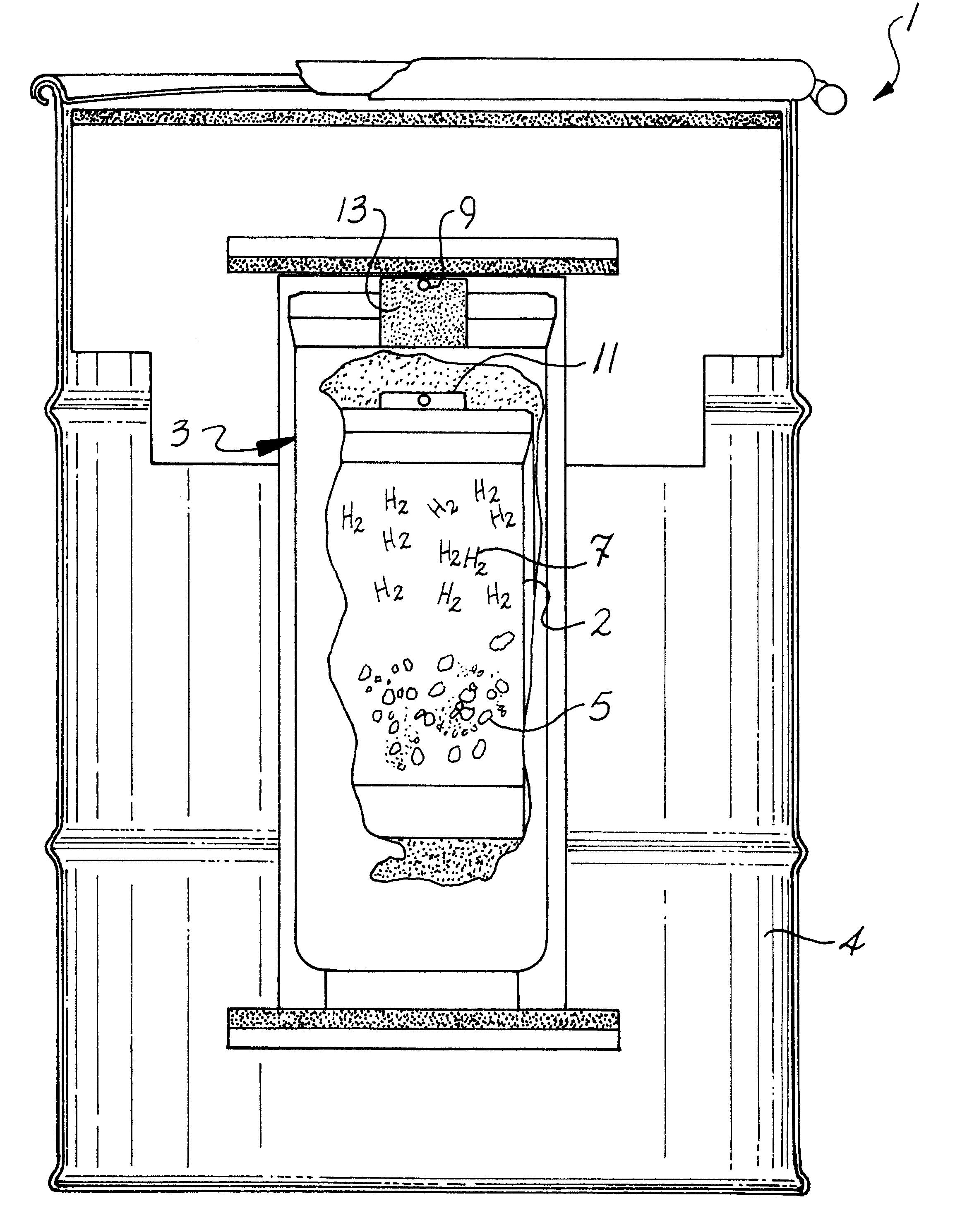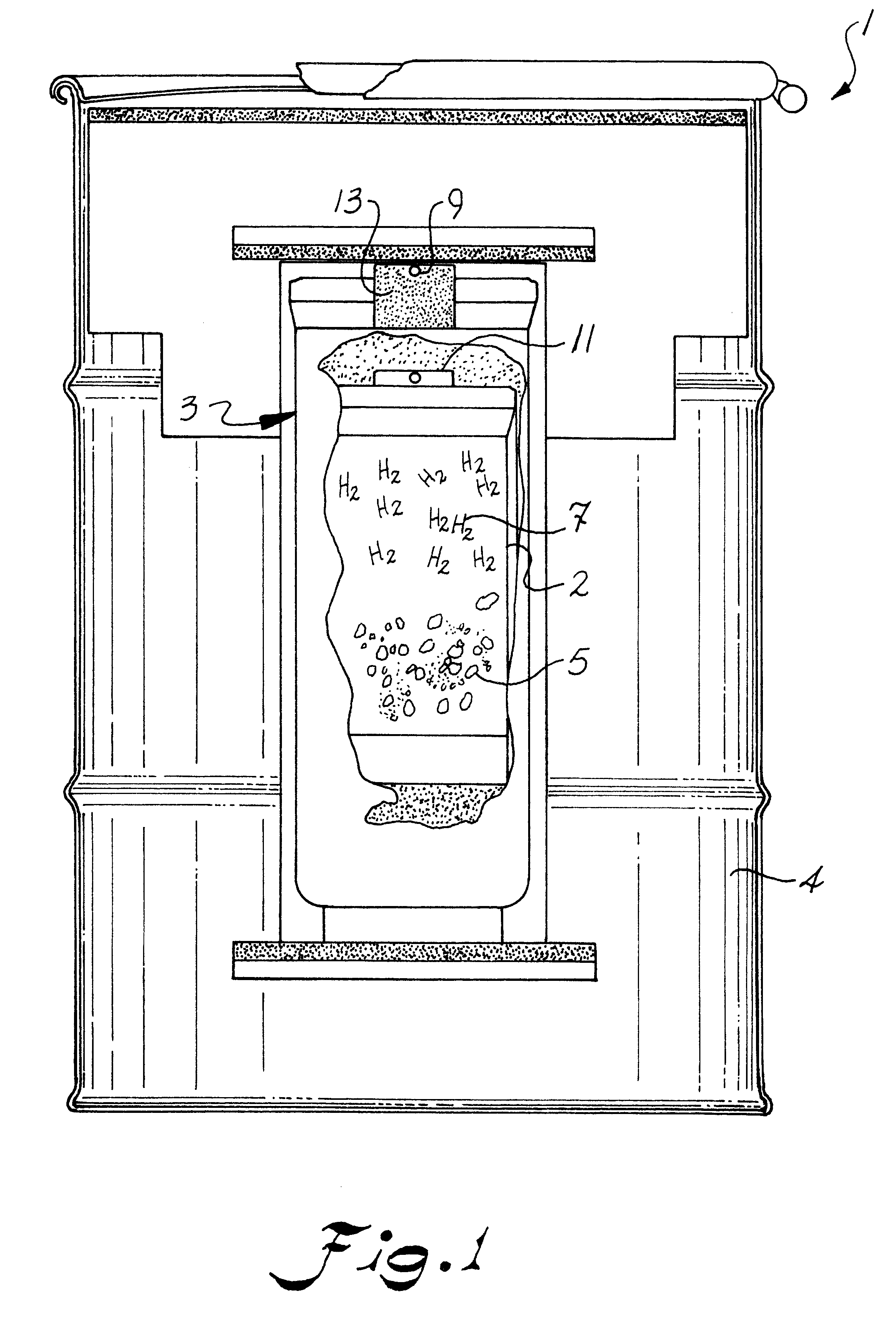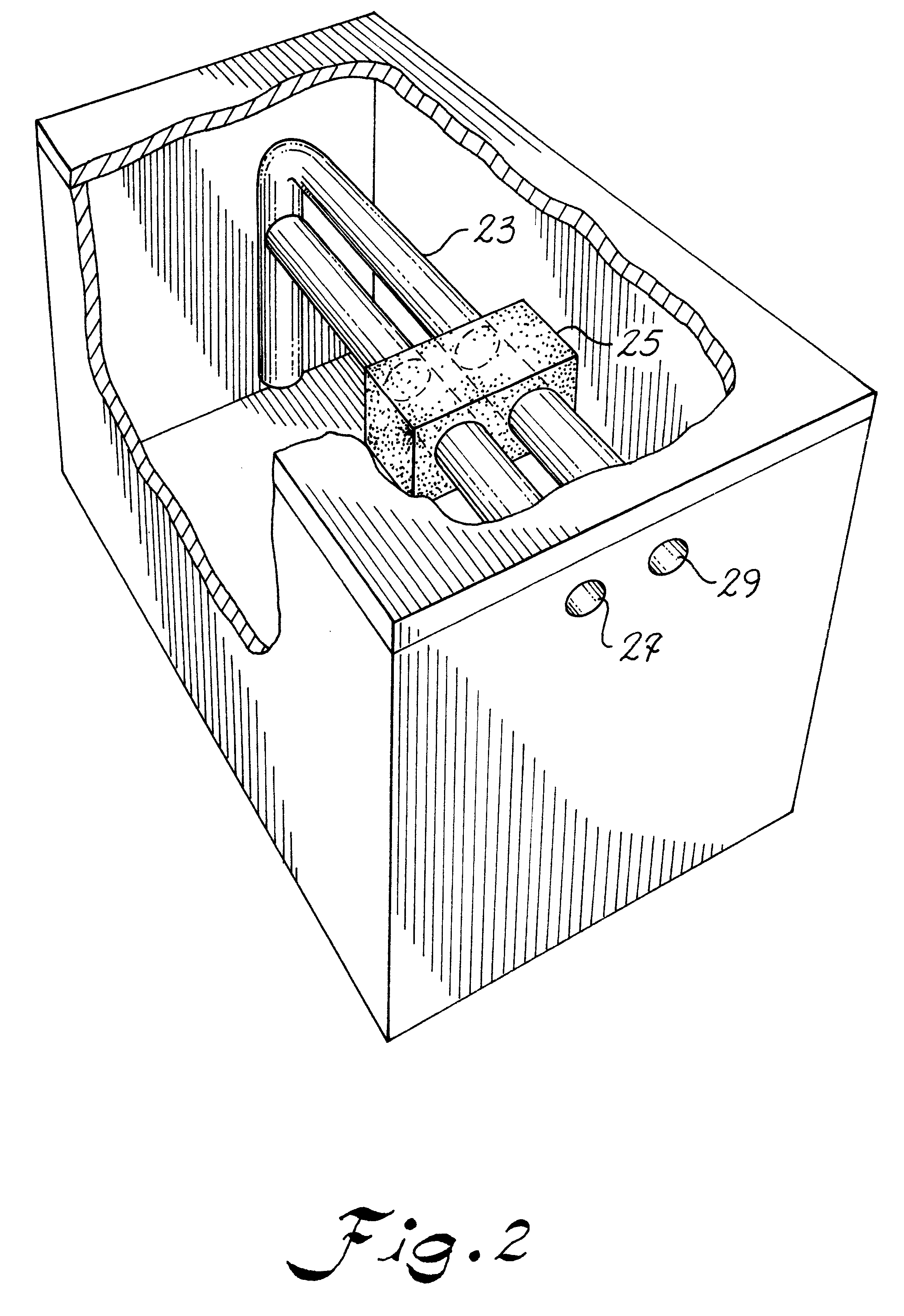Container and method for absorbing and reducing hydrogen concentration
a technology of hydrogen concentration and container, which is applied in the direction of secondary cell servicing/maintenance, cell components, separation processes, etc., can solve the problems of over-pressurization in sealed containers, damage to batteries and their containers, and possibly injuring people, and water vapor is particularly harmful
- Summary
- Abstract
- Description
- Claims
- Application Information
AI Technical Summary
Problems solved by technology
Method used
Image
Examples
first embodiment
With regard to the present invention, as seen in FIG. 1, a closed container 1, seen here as a waste drum, is provided containing a material 5 which produces hydrogen gas emissions 7. In a first embodiment, the container 1 is used to store waste comprising Pu-238 and high activity fraction of Pu-239. As a result of a radiolysis reaction, hydrogen gas is produced, creating an over pressurization and explosion concern during the transportation and long-term storage of the waste.
In a first embodiment of the invention, the container 1 comprises various layers for protection, including a primary containment vessel 2 which holds the stored waste. At the upper portion of the primary containment vessel 2 is a vent structure 11 which allows the hydrogen gas 7 to escape from the primary containment vessel 2 to the secondary containment vessel 3.
The secondary containment vessel 3 also comprises a secondary vent system 9 which vents to an outer containment area 4. The secondary vent system 9, ho...
second embodiment
The present invention is not limited to a sealed or vented container, however. In the invention, the hydrogen absorber is used in conjunction with a chamber housing a battery or battery systems which emit hydrogen gas.
Battery systems generate hydrogen gas emissions such that the danger of a build up of hydrogen gas emissions is a concern. If the system is a vented system, then the concentration of hydrogen gas in the environment to which the system is vented must be controlled. If the system is a closed system, H.sub.2 build-up or over-pressurization of the system must be avoided.
As seen in FIG. 2, a housing 21 for a battery system is provided. The housing 21 comprises a vent system 23 having at least one venting route. In the second embodiment, two venting routes are provided 27 and 29. The presence of the two venting routes allows sufficient quantities of hydrogen gas to be carried out of the housing 21 and also allows outside air to be brought in. The vent system 23 is in communi...
PUM
| Property | Measurement | Unit |
|---|---|---|
| particle size | aaaaa | aaaaa |
| temperature | aaaaa | aaaaa |
| particle size | aaaaa | aaaaa |
Abstract
Description
Claims
Application Information
 Login to View More
Login to View More - R&D
- Intellectual Property
- Life Sciences
- Materials
- Tech Scout
- Unparalleled Data Quality
- Higher Quality Content
- 60% Fewer Hallucinations
Browse by: Latest US Patents, China's latest patents, Technical Efficacy Thesaurus, Application Domain, Technology Topic, Popular Technical Reports.
© 2025 PatSnap. All rights reserved.Legal|Privacy policy|Modern Slavery Act Transparency Statement|Sitemap|About US| Contact US: help@patsnap.com



